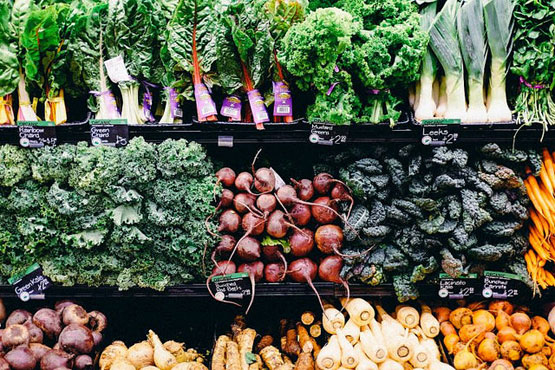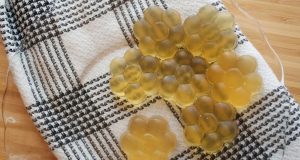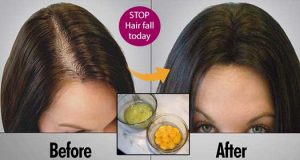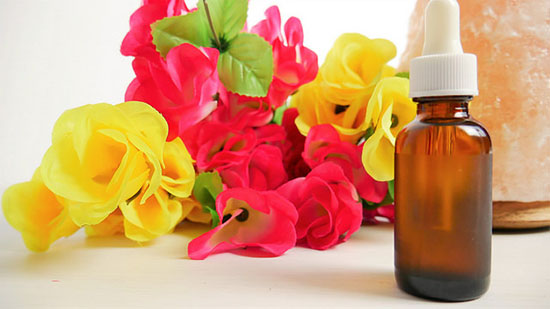While beige may be attractive for clothing, as food is really associated to cheap and quick food, poor with nutrients.

Most people eat food based on the taste and cost. Most of the processed food loses its nutrients during the process. Most of the foods that lack color are the cheap ones that keep us full for the lowest cost of money, but the highest of our health.
Phytochemicals
Phytochemicals are the natural substances that are naturally present in plants and highly beneficial for our health. Color can sometimes indicate the presence of these substances that often work together with fiber, vitamins and minerals. They also have the role of antioxidants.
The color of the food doesn’t mean that that food has one specific phytochemical class, foods can contain numerous phytochemicals that haven’t all been identified.
Consuming a variety of foods helps ensuring the intake of lots of nutrients and other healthy ingredients. It appears that nutrients and phytochemicals work in synergy, so colorful diet is a good approach of achieving optimal nutrition.
Counting Colors
According to the book What Color Is Your Diet? By David Heber, MD, PhD, and Bowerman the below text is a summary of the foods relationship with colors.
Blue/Purple
If the food has blue or purple color, this is due to the content of anthocyanin. The stronger the color is, so is the chemical’s content. Anthocyanin is an antioxidant that is really beneficial for the heart and will help in blood pressure healthy maintenance. Some experts even claim that it can help in reducing cancer risk. Blueberries are thought of as the most antioxidant fruit.
Examples: Eggplant (especially the skin), blueberries, blackberries, prunes, plums, pomegranates
Green
Chlorophyll is what makes up the green color in plants. The green foods are rich in isothiocyanates that help in the work of the liver and removal of potential cancer causing compounds. Certain data shows that broccoli and cabbage have indoles and isothiocyanates that may have anticancer properties.
Green veggies are also full of vitamin K, potassium, carotenoids, folic acid, omega-3 fatty acids and many more. These are all of crucial importance to our health.
Examples: Broccoli, cabbage, bok choy, Brussels sprouts
Yellow/Green
These variations show a richness in lutein which is very important for the health of the eyes. The macula in the eye has lutein receptors, and lutein protects the organ from degeneration caused by aging. Pistachios have lutein in the green skin.
These foods are also rich with vitamin C.
Examples: Avocado, kiwifruit, spinach and other leafy greens, pistachios
Red
The predominant pigment in red like fruits and vegetables is lycopene. As a carotenoid, it is a potent antioxidant linked to reduced risk for some cancers including prostate cancer and heart attack protection.
Proper utilization of these nutrients doesn’t depend on eating only raw foods. On the contrary, proper selection, storage and cooking is what brings about the optimal benefit.
Red food is also a source of flavonoids that have anti-inflammatory and antioxidant properties. Some red fruit have tannins which prevent the attachment of bacteria to cells.
Examples: Tomatoes and tomato products, watermelon, pink grapefruit, guava, cranberries
Yellow/Orange
Orange/yellow food is rich with beta-cryptoxanthin and vitamin C, while orange food is abundant in beta-carotene.
The carotenoids, when entering the body can be turned in vitamin A, which is crucial for good vision and immunity strength, for skin health and bone health. Beta-carotenes from some foods can act in cancer prevention (lung, stomach), also lowering the risk of heart disease improvement of the immune function.
Examples: Carrots, mangos, cantaloupe, winter squash, sweet potatoes, pumpkins, apricots
No Color? No Problem
The color still cannot tell us everything and is not an exclusive indicator of the content of phytochemicals. Some phytochemicals are of no color.
Flavonoids are the biggest group of phytochemicals and most of them are colorless. Flavonoids aid the body in battling creation of free-radicals.
There are more than 4 thousand differing flavonoids, classified in the following categories:
- flavonols:
-myricetin (in berries, grapes, parsley, and spinach);
-quercetin (in onions, apples, broccoli, cranberries, and grapes); - flavones:
-apigenin (in celery, lettuce, and parsley);
-luteolin (in beets, bell peppers, and Brussels sprouts); - flavanones:
-hesperetin and naringenin (both in citrus fruits and juices); - flavan-3-ols:
-catechin (in tea, red wine, and dark chocolate);
-epicatechin, gallate, epigallocatechin, and epigallocatechin gallate (in teas, fruits, and legumes); and - anthocyanidins (in blue/purple and red fruits and vegetables).
Colorful diet
Including a variety of colors in your diet seems to improve the health. Epidemiological research shows that people that consume different fruit and veggies have lower risk for some diseases. However, the optimal color ratio of consumption has not been yet discovered.












